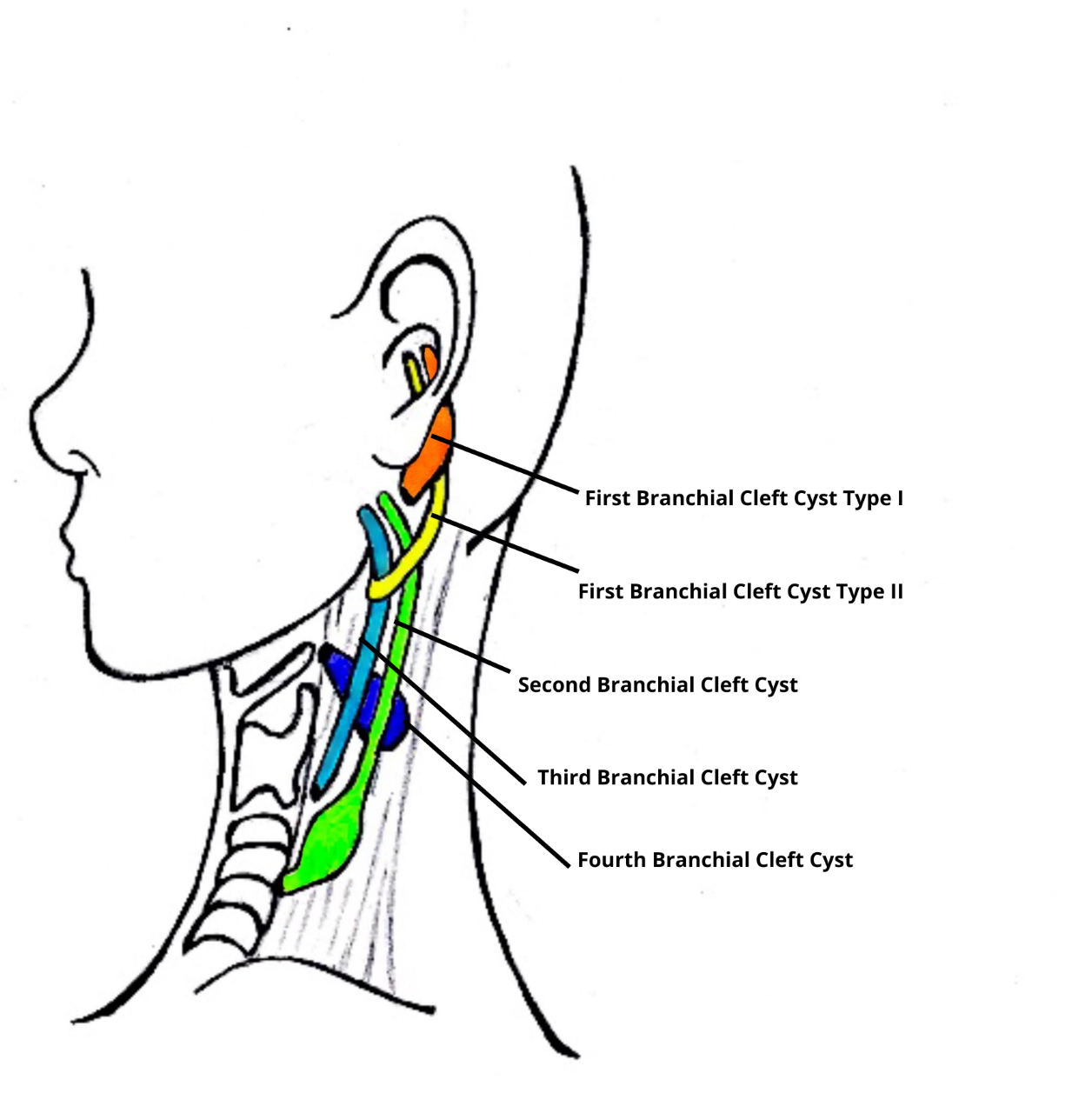Patient EducationJan | 4 | 2020
Branchial Cleft Cysts and Sinus Tracts in Children: Causes and Symptoms
What Are Branchial Cleft Cysts?
Branchial cleft cysts (also called branchial cleft remnants or branchial cleft anomalies) are a congenital condition (condition present at birth) in which tissue develops incorrectly on one or both sides of the neck. Branchial cleft cysts sometimes have openings on the inside or outside of the skin called sinus tracts. Fluid may drain from the openings.
What Are the Different Types of Branchial Cleft Anomalies?
There are 3 types of brachial cleft anomalies:
- Sinus tracts occur when there is one opening in the skin where fluid may drain out of a small hole in the neck.
- Branchial fistulas occur when one opening forms specifically between the skin and throat lining (pharynx), draining mucus out of the neck.
- Branchial cleft cysts occur when there is no external opening and liquid cannot drain out of the neck. Then, a collection of fluid forms. A brachial cyst can occur on its own or with a branchial cleft sinus tract or fistula. There are 4 types of branchial cleft cysts:
First branchial cleft cysts:
There are 2 types of first brachial cleft cysts. In type 1, there is an external opening above the jawline. In type 2, the opening to the sinus tract is lower on the upper neck above the hyoid bone (a U-shaped bone between the lower jaw and voice box). Sometimes, children with this type of brachial cleft cyst may also have an internal opening to the sinus tract in the ear canal.
Second branchial cleft cysts:
These are the most common type of branchial cleft cyst. They usually appear after a child turns 10. External openings to the sinus tract are in the upper sides of the neck. Internal openings may form as well at the back of the throat near the tonsils. Second branchial cleft sinus tracts may also look like skin tags on the neck.
Third branchial cleft cysts:
Most third branchial cleft cysts occur on the left side of the neck close to the thyroid gland (a butterfly-shaped gland on the front of the throat) and within the muscle attached to the collarbone. This type is less common than the first and second type.
Fourth branchial cleft cysts:
Fourth branchial cleft cysts are rare. They most often appear on the lower left side of the neck. They are often misdiagnosed or unnoticed in children.
Sometimes, third and fourth branchial cleft do not have sinus tracts. This means there is no external opening for fluids to exit the body. Infections in these cysts can cause skin irritation in the area around the thyroid gland. 
What Causes Branchial Cleft Cysts and Sinus Tracts in Children?
Branchial cleft cysts and sinus are congenital conditions (conditions present at birth) caused by unexpected changes during pregnancy. Often, these changes occur around the 5th week of pregnancy, when gill-like structures around the neck do not reabsorb back into the skin. At the same time, pharyngeal arches (bands of tissue that develop into the head and neck) start to form. Later, these arches become bone, cartilage, muscles and blood vessels. When these arches form incorrectly, they create empty spaces that fill with fluid and become cysts. Most of the time these conditions are unilateral (occur on one side of the neck). When branchial cleft cysts are bilateral (on both sides), your child is more likely to have other congenital abnormalities (conditions present at birth).
What Are the Symptoms of Branchial Cleft Cysts and Sinus Tracts?
Some branchial cleft cysts go unnoticed until your child develops an upper respiratory infection, like the common cold. Unless the cyst is infected, it is usually not painful.
Possible symptoms include:
- Lump or skin tag on neck or upper shoulder
- Bumps that become more painful with swallowing/ grow bigger over time
- Swelling or tenderness on neck, sometimes occurring during or after an upper respiratory infection
- Fluid exiting neck from a small dimple or opening in skin
If the cyst is infected, possible symptoms include:
- Painful bump in the neck
- Trouble with swallowing
- Skin itching and irritation
If your child has any of these symptoms, tell the pediatrician. They will likely refer you to a pediatric surgeon.
Related Pages
Type
Patient Resources
Patient Resources for Pediatric Surgery
Appointments and Referrals
Request an appointment or second opinion, refer a patient, find a doctor or view test results with MGfC's secure online services.

